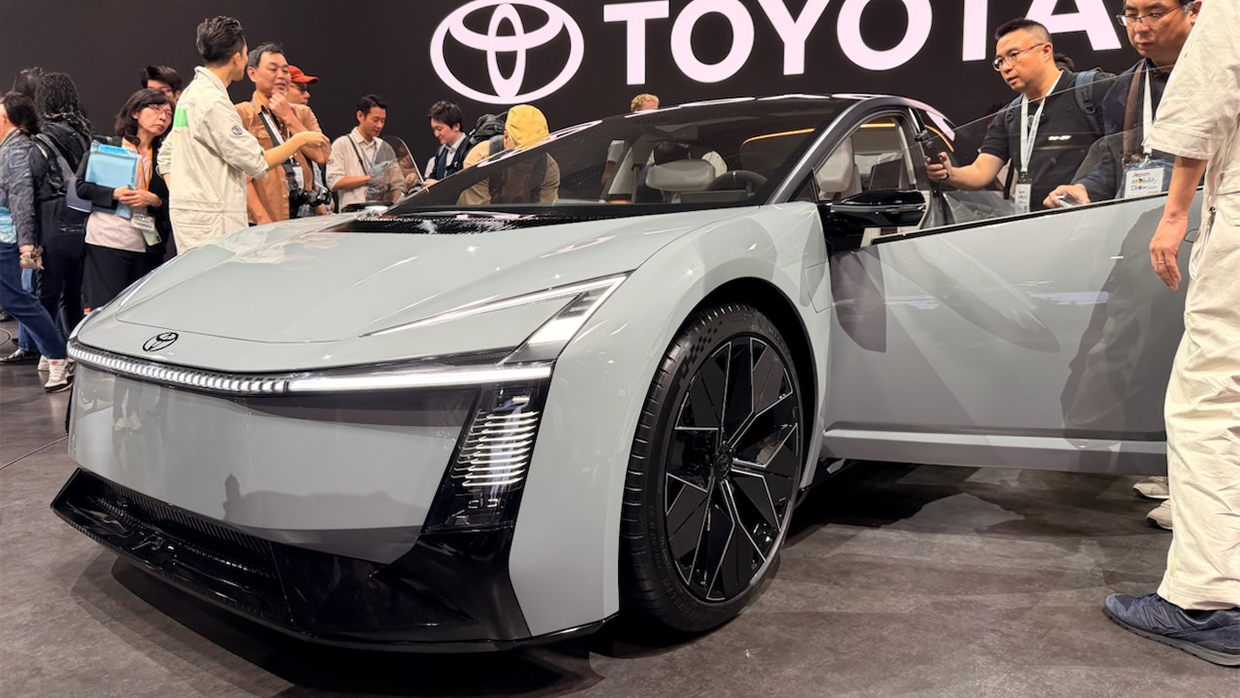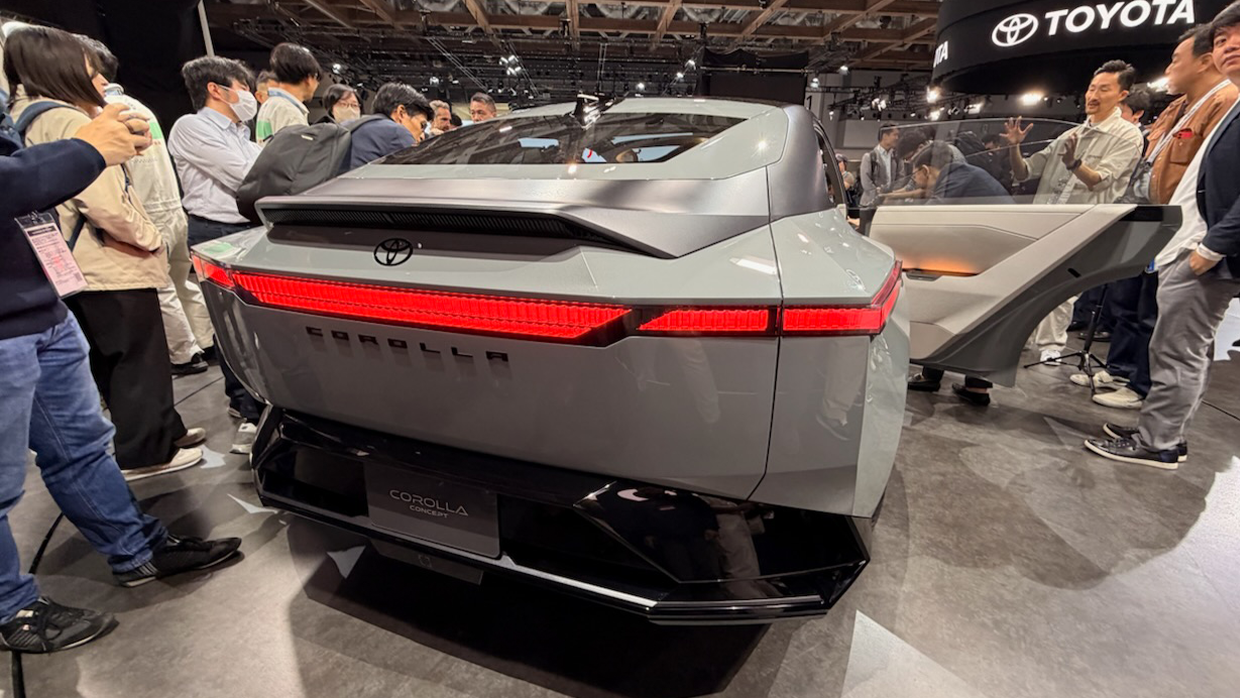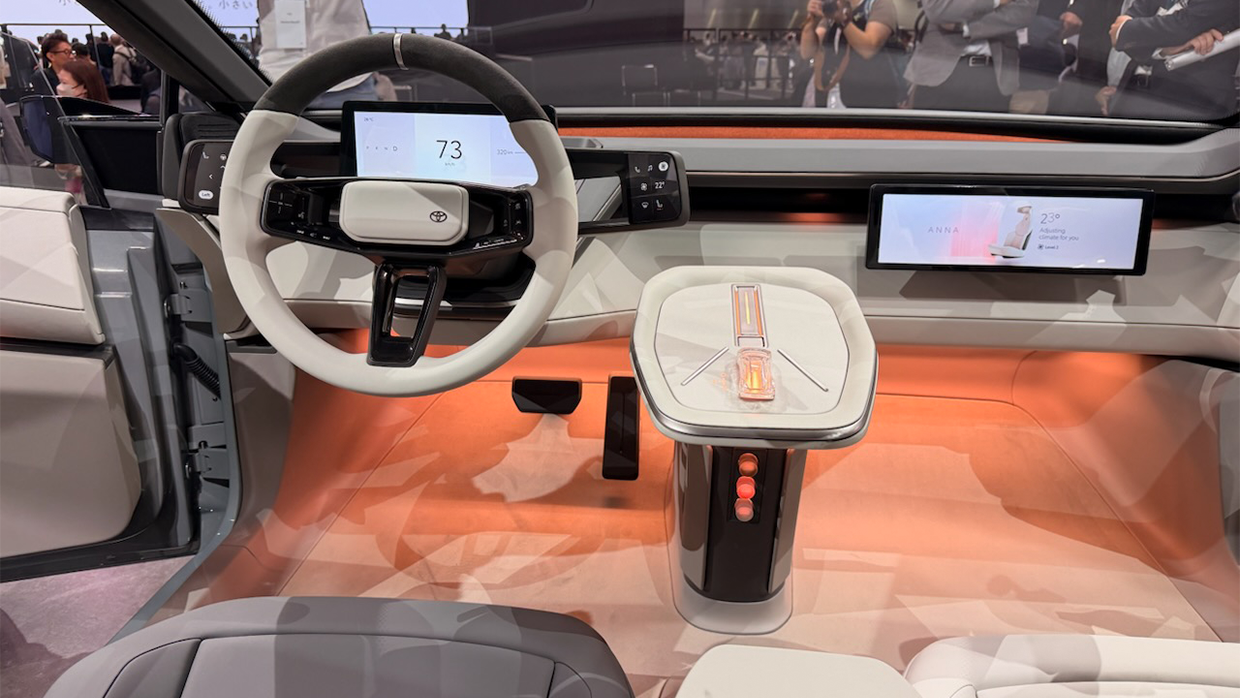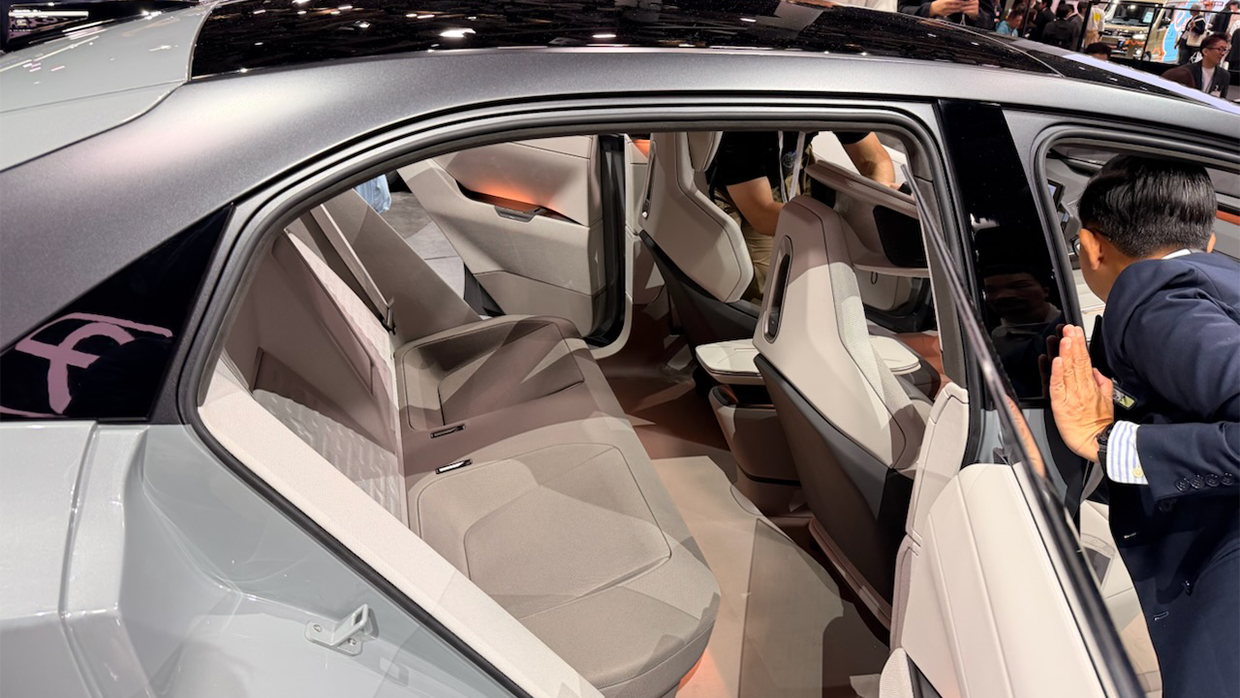-
Car Reviews
- Car News
-
Car Comparisons
Latest comparisons
- Chasing Deals
Thirteenth-gen Toyota small car will respond to changing powertrain demands by supporting wide array of buyer preferences within a radical design
Toyota has previewed the next-generation Corolla with a futuristic concept car at this year’s Japan Mobility Show, and it has confirmed the incoming version will support a wide range of powertrains.
“The Corolla is a car for the majority, but the majority does not necessarily want the same answer,” explained Lance Scott, head of Toyota Europe Design Development. “You can choose whatever powertrain that works for you,” said Scott.
The fastback-bodied Corolla Concept has a battery charge meter just behind its front quarter panel, indicating that it is either a battery electric vehicle (BEV) or a plug-in hybrid (PHEV).
But Toyota Motor Corporation (TMC) will also use the Tokyo Motor Show this week to reaffirm its commitment to a “multi-pathway” policy that will allow customers the choice of partial combustion power, through hybrid engines, for an extended period.
PHEV is likely to be Toyota’s focus with the new Corolla. The concept vehicle has three filler caps—one at the rear for petrol, and two at the front for electric charging.
The Corolla will likely debut Toyota’s new 1.5- and 2.0-litre four-cylinder petrol engines and a strengthened hybrid system.
Scott confirmed that the new, 13th-generation Corolla’s platform has been designed to have common packaging that stays the same no matter what powertrain is chosen.
This is likely to mean that space has been left in the chassis for the large battery required for BEV versions, likely impacting passenger and cargo space.
Consequentially, the need to ‘push up’ the floor for BEV and PHEV versions of the new Corolla may explain why the Corolla Concept has grown noticeably in size over the outgoing car, which was only available with petrol or small-battery hybrid versions.
While the concept appears to preview a sedan (or liftback) version of the next Corolla, the enduring relevance of hatchbacks, particularly in the European market, may mean a five-door variant is spawned later.
The Corolla faces an increasingly broad set of competitors including not only traditional rivals like the Volkswagen Golf and Mazda 3, but also small to midsize electric cars that attract subsidies in markets like Australia—from the MG4 to the Tesla Model 3.
Externally, the design incorporates an exaggerated interpretation of Toyota’s new wraparound running light design, a gently raked windscreen and fully blacked-out glasshouse.
Alloy wheels measuring 21-inches in size are pushed close to the corners of the elongated body.
Inside, the Corolla uses a fully round steering wheel incorporating shortcut controls on the spokes and a triple-display instrument cluster array.
There is no traditional screen in the centre of the dashboard; instead, high-tier models may include the concept’s elegantly packaged fold-out passenger screen.
A gear selector (or direction selector for a BEV version) is shaped like the body of the Corolla.
Back seat space is voluminous, reflecting the Corolla’s expanded size. Sedan versions of small cars have grown substantially in recent years reflecting buyer tastes in North America and China.
Latest news
About Chasing cars
Chasing Cars reviews are 100% independent.
Because we are powered by Budget Direct Insurance, we don’t receive advertising or sales revenue from car manufacturers.
We’re truly independent – giving you Australia’s best car reviews.





